Ensuring Flour Food Safety
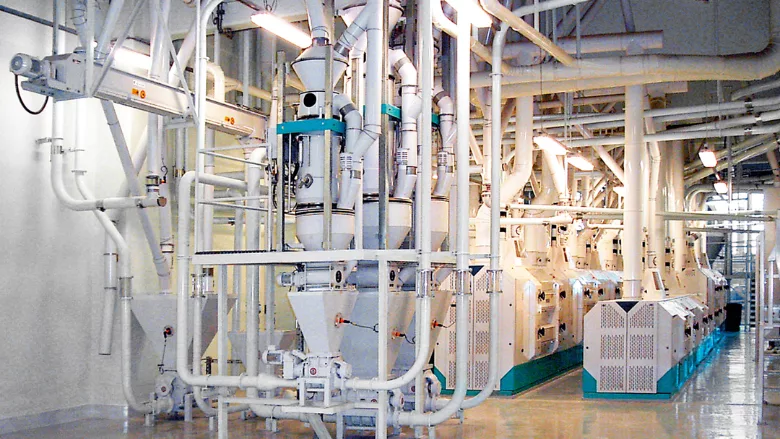
Image credit: Stephen Hufford
Food safety is the single most important aspect of food production. A few years ago, as a food safety consultant, I was given the challenge to assist three large flour mills in achieving FSSC 22000 certification. Flour mills are wonderful producers of food. They are highly automated while producing large volumes of flour. One mill where I consulted had only 25 employees producing 800,000 pounds of flour daily. These facilities have enclosed systems that transfer the wheat from different sections of the plant through piping and the use of various processing machines. It is a very efficient process.
The processes in these mills do present challenges, however. One is the nature of cleaning the facility. Water cannot be used as in most food plants, where equipment is sprayed down and cleaned with wet sanitizers. One reason for the lack of water use is that some mills have wood construction. Another reason is that water, upon touching flour, ruins the product and creates a sanitation problem. All cleaning must be accomplished in dry form using brooms and brushes, according to a predetermined Sanitation Standard Operating Procedure (SSOP).
Another challenge of flour mills is the lack of personnel. While it is a great value for the company to be able to employ so few people in day-to-day operations, it creates a hardship with regard to food safety implementation. To certify facilities for Global Food Safety Initiative (GFSI) schemes and to meet other food safety standards requires thorough training of employees. Along with training, there is a need to identify which individuals will be responsible for which food safety-related tasks. All employees receive basic food safety training, while specific persons are given training related to their responsibilities.
Flour mills produce a "ready-to-cook" product that must be processed by cooking prior to consumption. This is a major advantage over ready-to-eat type product. Any microbiological contamination should be eliminated at the bakery or home kitchen that receives and cooks the flour. Chemical contamination is usually not a factor. The most severe food safety hazards at flour mills are physical and can include metal, wood, pests, and other items. The first point of physical hazard prevention begins at receiving inspection, when the wheat is unloaded. At this point, receiving personnel can prevent any visible items from entering the food chain. One flour mill found a toolbox in the wheat upon unloading!
After the wheat proceeds to the mill, it passes through scourers, roll stands, sifters, magnets, and metal detectors to help identify and eliminate physical hazards in the flour. All of these machines should have a work instruction, be regularly monitored, and be on a preventative maintenance schedule.
Pest control is also of critical importance at flour mills. Many pests including rats, mice, birds, and others are commonly found in and around flour mills. Companies must have a vibrant and effective pest control program to protect their food products from being contaminated. They must partner with a good pest control company and pest control operator. The pest control firm should install a sufficient number of traps inside the mill at adequate spacing, on each side of all personnel and dock exit doors, and these traps should be checked weekly. The outside perimeter must have bait stations spaced appropriately and monitored at least monthly. Additionally all pest control operators should have liability insurance, applicator licenses, and training certificates. They must maintain maps of the locations of all traps and bait stations, sighting logs, service reports, safety data sheets, and chemical usage forms.
The following sections cover in more detail an assessment of the biological, chemical, and physical hazards of a flour mill, along with the milling equipment used.
Looking for quick answers on food safety topics?
Try Ask FSM, our new smart AI search tool.
Ask FSM →
Food Safety Hazards in Flour Mills
All food safety systems are living and breathing. They will be ever-changing, needing to be updated and revised. Table 1 shows three categories of potential hazards that flour mills should consider for their HACCP plans. Specific hazards are listed in each category, along with an explanation of why these hazards are or are not considered significant food safety hazards.
Table 1. Types of Food Safety Hazards Found in Flour Mills
| Hazard Type | Hazard | Description |
|---|---|---|
| Biological | Deoxynivalenol | Deoxynivalenol, more commonly known as vomitoxin, is produced by several mold species of the genus Fusarium. Vomitoxin is naturally occurring in wheat depending on the moisture available. In dry growing years, vomitoxin is not prevalent, but in wet growing years it can be present. FDA has a guideline of 1 ppm on finished flour. FDA states that deoxynivalenol is not completely avoidable in wheat, but levels are reduced in the milling process. Deoxynivalenol is a significant food safety hazard. Control measures at receiving (testing) help reduce or eliminate this hazard to an acceptable level. Loads of wheat are rejected if they test above set levels for vomitoxin. |
| Salmonella | Salmonella from wheat has been linked to food safety outbreaks in flour. Salmonella is a recognized potential biological contaminant in wheat. Studies have shown that the rate of wheat flours containing Salmonella can be as great as 1.3 percent. Salmonella also poses a significant food safety hazard in raw flour. However, if baked at 375 °F (190.6 °C) for 17 minutes or more, Salmonella will be destroyed. | |
| Toxic seeds | The finding of toxic seeds in incoming ingredients or raw materials in the U.S. is infrequent, although some geographic areas such as Australia have the potential risk of contamination. Toxic seeds are not a significant hazard in the U.S. | |
| Chemical | Fungicides, pesticides, and insecticides | There is potential for higher-than-acceptable levels (according to Environmental Protection Agency/FDA guidelines) of fungicides, pesticides, and insecticides on incoming wheat. Farmers apply these chemicals to crops and storage bins to control vomitoxin, mold, pests, and insects. In absence of control at wheat receiving, there is potential for contamination by these chemicals. Therefore, fungicides, pesticides, and insecticides can be deemed a food safety hazard. |
| Soy protein | Soybeans contain a small but newly significant storage protein, 2S albumin. Due to farming practices and crop rotation, there is a potential for cross-contamination of soy protein in the incoming wheat. Soy protein, therefore, can be considered a significant food safety hazard. |
A flour milling company's intent should be to produce under conditions that will lead to safe and quality products. The process is designed to ensure that no product leaves the facility and enters commerce that is unsafe or adulterated.
Milling companies should perform visual inspection (following a work instruction) on each delivery vehicle that brings wheat to the mill. The wheat should be probed and tested for moisture. The mill will perform a deoxynivalenol/vomitoxin test on loads. All information must be filled out on an incoming material receiving form.
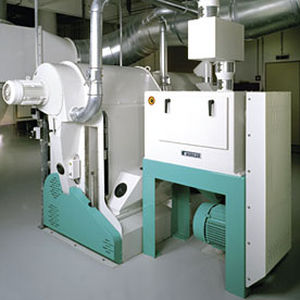
Flour mills use scourers to clean the wheat (Figure 1). The scourers efficiently remove impurities such as dust, sand, mold, clods of soil, and any other non-wheat material that adhere to the grain, providing ideal preparation for grinding. The scourer also significantly improves product hygiene by reducing the microbial count (bacteria, fungus, etc.), as well as by minimizing the presence of insects or their fragments.
A roll stand (Figure 2) is a double-roller mill that accomplishes particle size reduction through a combination of forces and design features. They are energy-efficient, create little noise and dust generation, and have uniform particle size distribution. They are able to be opened during production (following intrusive work instruction) to inspect and determine if they are operating properly.
Figure 2. Example of a Roll Stand
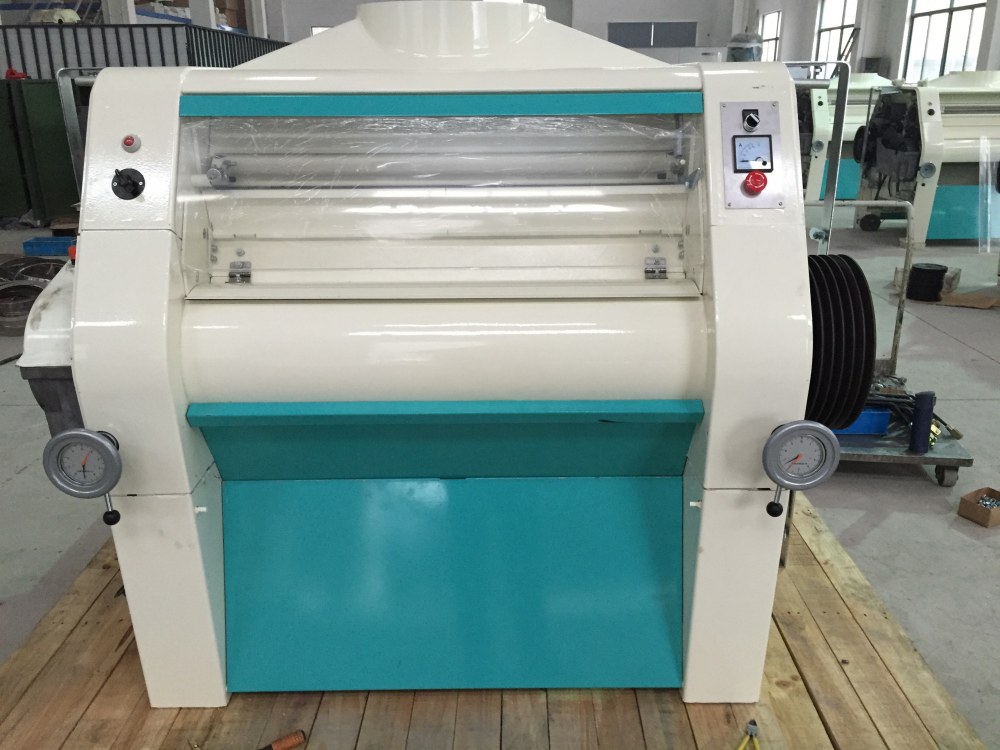
Mills also have magnets to keep product and equipment free from metal fines and tramp metals. These devices are used to remove metal particles from the wheat and/or flour going through the process. Magnets are monitored and inspected according to work instruction.
Flour mills have an enclosed processing system (Figure 3). The wheat and/or flour is transferred by a series of pipes from roll stands to airlocks to cyclones to sifters, and is then sent to storage, packed into bags or totes, or loaded into bulk trailers. The enclosure makes it a very safe process.
Figure 3. Example of an Enclosed Processing System in a Flour Mill
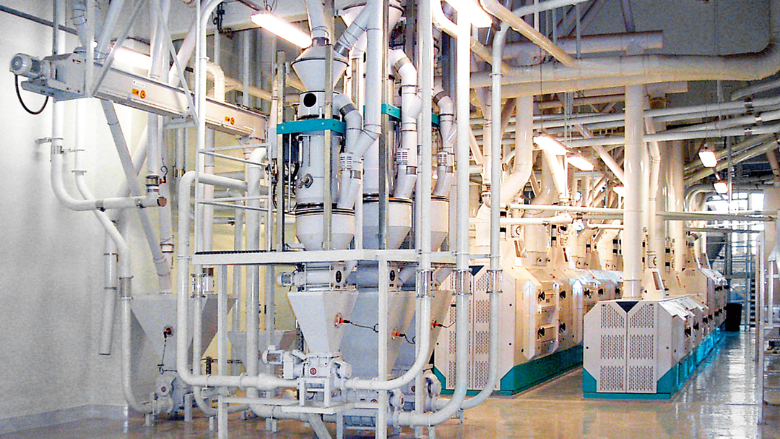
Most mills have many sifter sections (Figure 4). The sifters remove oversized or foreign material and de-dust the material to meet final product specifications. The sifter controls both oversized and undersized material. It utilizes a sieve for particle size separation via finely meshed bolting cloths. These cloths grade grains by length, width size, maturity, and intact condition. Sifters are cleaned and inspected according to work instruction.
Figure 4. Example of a Sifter
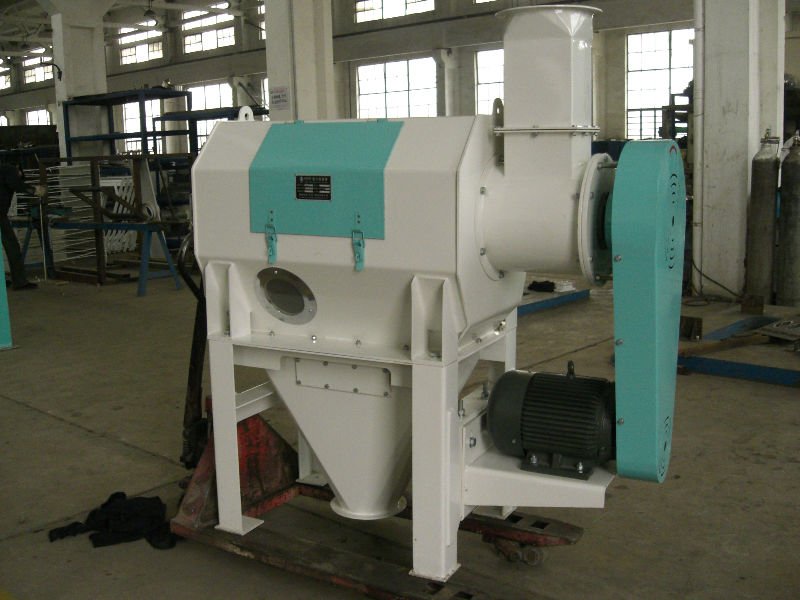
Mills will also utilize metal detector(s) throughout the process. This equipment is typically set for detecting 2-mm stainless steel in 50–100-lb bags of dry product. The system will also detect ferrous and non-ferrous metal as small as 1.5 mm. Metal detection in a bagging area can be a Control Point or a Critical Control Point at the mill's discretion.
Flour mills can be confident that they produce a safe and high-quality flour product through their use of inspection, wheat cleaning, magnet and metal detection devices, sifters, scourers, and other equipment within their enclosed systems.








